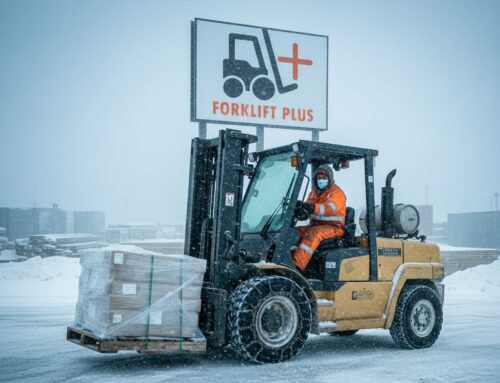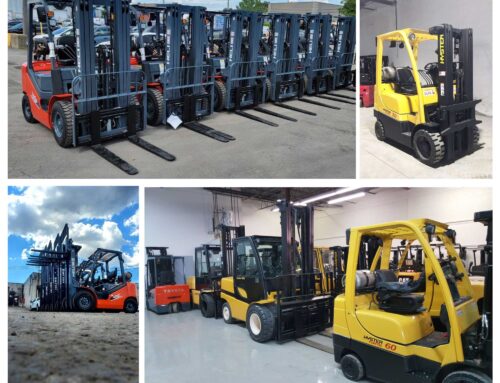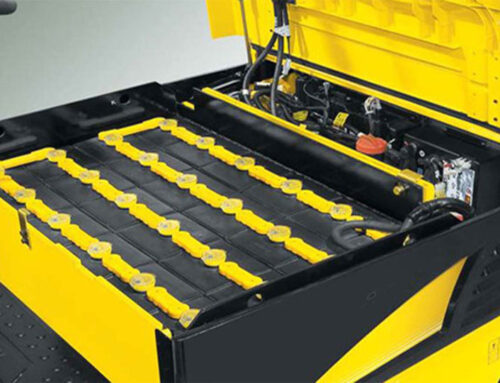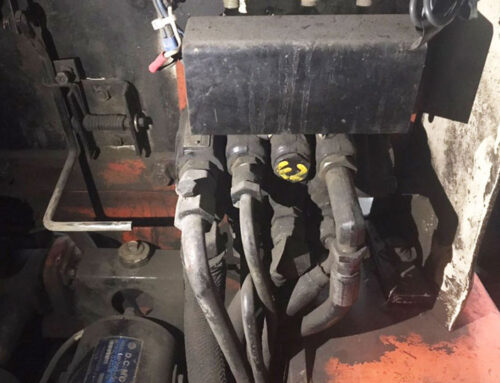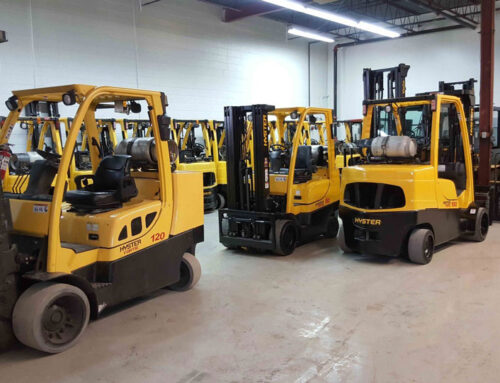Electric vs Propane Forklifts: Complete Guide + Canada Climate Playbook
Expert comparison of electric and propane (LPG) forklifts with tables, cost models, maintenance tips, safety, and climate‑specific advice across Canadian regions.
Decision Snapshot
- Clean indoor operations with noise/air constraints: Electric forklifts (lithium for multi‑shift).
- Outdoor, heavy multi‑shift, long ramps, limited power: Propane (LPG) forklifts are often more practical.
- Many sites win with a blended fleet: electric indoors + propane for yard/dock → optimal TCO.
Core Comparison: Electric Forklifts ⚡ vs Propane (LPG) Forklifts🔥
| Factor | Electric ⚡ | Propane (LPG) 🔥 |
|---|---|---|
| On‑site emissions | Zero tailpipe; ideal for food/pharma | Produces CO/NOx/CO2; ventilation required |
| Noise/vibration | Low (≈60–70 dBA), less fatigue | Higher (≈75–85 dBA) |
| Torque/control | Instant torque; precise low‑speed control | Strong at higher sustained speeds |
| Ramps/grades | 80V/lithium models handle ≈15–25% | Very reliable on long grades |
| Floor/surface | Excellent on smooth floors; outdoor‑rated options exist | Flexible on uneven/wet outdoor surfaces |
| Rain/moisture | Needs suitable IP rating; avoid pooling | Generally more tolerant |
| Cold weather | Lead‑acid derates; Low‑Temp lithium excels | Starts well; watch regulator icing |
| Hot weather | Battery/charger thermal management | Cylinder pressure and engine cooling matter |
| Uptime | Planned opportunity/fast charging | 2–5 min cylinder swaps |
| Energy per hour | ≈ 8–10 kWh/h (duty‑dependent) | ≈ 0.8–1.4 gal/h (≈3.5–5 L/h) |
| Maintenance | Fewer consumables; no oil/plugs/filters | 250–500 h engine services |
| Infrastructure | Chargers, power capacity, ventilation (lead‑acid) | Cylinder cage, fire safety, fuel logistics |
| Process safety | No fuel vapours; manage H₂ for lead‑acid | Gas/CO risks; training essential |
| CAPEX | Higher (20–40%; lithium higher) | Lower; fast to deploy |
| Multi‑year TCO | Often lower with affordable electricity | Sensitive to fuel price and service |
| Best for | Food/pharma, e‑commerce, high‑bay, cold storage | Yards/docks, building materials, mixed heavy duty |
Performance & Duty Cycle
- Electric forklift: Instant torque, fine manoeuvring in tight aisles; 1–2 shifts with lead‑acid, 2–3 with lithium or battery swaps (≈7–12 kWh/h for 1.5–2.5 t).
- Propane forklift: Steady power for long runs/ramps; ≈0.8–1.4 gal/h (≈3–5 L/h). A 33 lb cylinder ≈ 5–8 hours.
Uptime, Charging & Refuelling
Lead‑acid batteries Forklifts
- 8h work + 8h charge + 8h cool; optimisable via opportunity charging.
- Watering and ventilated rooms (hydrogen) required.
Lithium‑ion batteries Forklifts
- 1–2 h fast charges (0.5–1C), ideal for multi‑shift; no watering/hydrogen.
Propane (LPG) Forklifts
- 2–5 min cylinder swaps; high availability. Safety/ergonomic training is mandatory.
Maintenance & Reliability
- Electric forklift: Fewer wear parts. Lead‑acid ≈ 1200–1800 cycles; lithium ≈ 3000–5000 cycles.
- Propane forklift: Scheduled engine services (oil, filters, plugs, regulator), emissions tuning, cooling care.
Safety & Air Quality
- Electric: Zero on‑site emissions; low noise. Manage hydrogen in lead‑acid charging rooms.
- Propane: CO/NOx produced; ventilation and emissions tuning critical. Storage/handling per CSA B149.2; operator training per CSA B335.
Canada‑specific Guidance
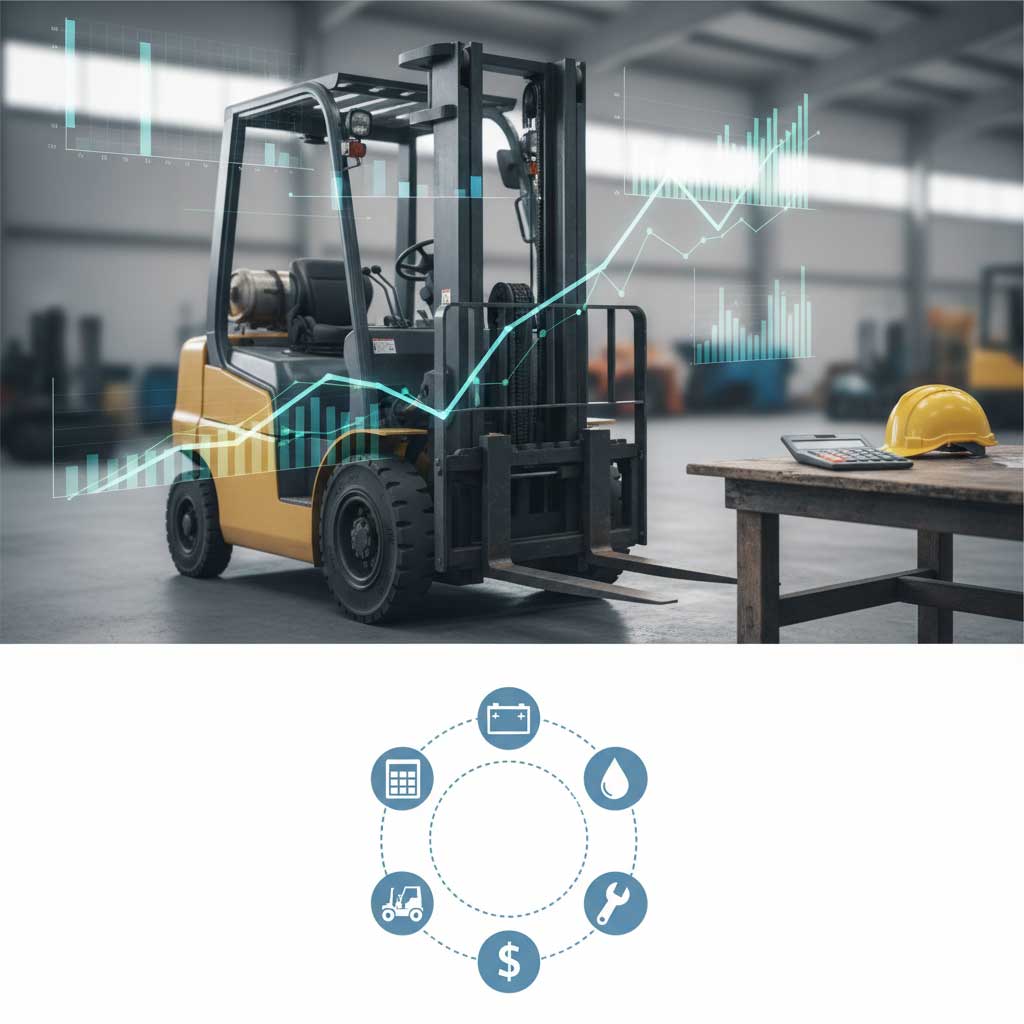
Quick Recommendations
- Indoors: electric. Freezers/winters: Low‑Temp lithium.
- Harsh outdoor multi‑shift with limited power (Prairies/North): propane, or 80V electric with proper IP if power allows.
- Coastal salt/humidity: electric with robust IP and anti‑corrosion; propane viable but more upkeep.
Regional Climate Playbook (Canada)
| Region | Climate traits | Electric recommendation | Propane notes | Pro tips |
|---|---|---|---|---|
| British Columbia (Coast) | Mild winters, heavy rain, high humidity | IP54/55, sealed connectors, corrosion protection, traction tires | Operable; monitor corrosion | Enclosed cab, heated windshield, LED lighting |
| British Columbia (Interior & North) | Colder winters, drier summers | Lithium with heater packs; traction tires | Reliable; prevent regulator icing | Indoor battery rooms; tire chains |
| Alberta | Very cold, windy, icy | Lithium with internal heaters; ISO VG oils | Robust; regulator icing risk | Chain tires; warm spare cylinders |
| Saskatchewan | Harsh cold, blizzards | Heated charging bays; Low‑Temp lithium | Cylinders may ice | Warm storage areas; winterized fluids |
| Manitoba | Extreme cold snaps, ice storms | Lithium heaters; de‑ice protocols | Reliable; check regulators | Heated indoor staging |
| Ontario | Cold winters, humid summers | Indoors: standard; outdoors: 80V Low‑Temp lithium | Needs strong ventilation indoors | 600 V three‑phase charger‑ready |
| Québec | Cold winters, humid summers | Indoors: standard; outdoors: Low‑Temp 80V | Ventilation required indoors | Training signage in French |
| New Brunswick | Maritime, humid, cold winters | Sealing & anti‑corrosion coatings | Feasible; higher corrosion maintenance | Marine‑grade grease; rinse undercarriage |
| Nova Scotia | Wind, fog, salt exposure | Epoxy/galvanised coatings; IP65 connectors | Operable; rust maintenance higher | Indoor storage; LED lighting in fog |
| Prince Edward Island | Maritime, windy, salty | Sealed housings; indoor lithium in winter | OK; corrosion risk higher | Frequent washdowns; anti‑rust coating |
| Newfoundland & Labrador | Wet snow, heavy salt, harsh maritime | Rugged sealing, anti‑corrosion packages | Useable; but higher rust servicing | Stainless fasteners; staged warm‑ups |
| Yukon | Severe cold, remote sites | Indoors heated: lithium; outdoors: true Low‑Temp chemistries | Viable if supply reliable | Stockpile parts; pre‑heat routines |
| Northwest Territories | Arctic cold, limited grid | Heated storage; Low‑Temp lithium | Depends on propane logistics | Generators & redundant heaters |
| Nunavut | Extreme arctic cold, scarce utilities | Arctic‑grade insulated lithium indoors | Propane costly & variable | Spare batteries; heater maintenance |
Sample energy costs by province and territory
Illustrative values — use your tariff/contract. Assumptions: 2–2.5 t truck, electric ≈ 9 kWh/h, propane ≈ 4.5 L/h.
| Province/Territory | Industrial electricity (C$/kWh) | Electric energy (C$/h) | Propane + carbon (C$/L) | Propane energy (C$/h) |
|---|---|---|---|---|
| British Columbia | 0.12 | 1.08 | ≈1.18 | 5.31 |
| Alberta | 0.15 | 1.35 | ≈1.14 | 5.13 |
| Saskatchewan | 0.12 | 1.08 | ≈1.10 | 4.95 |
| Manitoba | 0.08 | 0.72 | ≈1.05 | 4.73 |
| Ontario | 0.13 | 1.17 | ≈1.14 | 5.13 |
| Québec | 0.07 | 0.63 | ≈1.04 | 4.68 |
| New Brunswick | 0.14 | 1.26 | ≈1.20 | 5.40 |
| Nova Scotia | 0.15 | 1.35 | ≈1.24 | 5.58 |
| Prince Edward Island | 0.16 | 1.44 | ≈1.22 | 5.49 |
| Newfoundland & Labrador | 0.14 | 1.26 | ≈1.25 | 5.63 |
| Yukon | 0.20 | 1.80 | ≈1.45 | 6.53 |
| Northwest Territories | 0.22 | 1.98 | ≈1.55 | 6.98 |
| Nunavut | 0.25 | 2.25 | ≈1.65 | 7.43 |
Quick ROI (example: 3,000 h/year)
- Québec: savings ≈ (4.68−0.63)×3000 = C$12,150/year
- Ontario: ≈ (5.13−1.17)×3000 = C$11,880/year
- Alberta: ≈ (5.13−1.35)×3000 = C$11,340/year
Infrastructure & Deployment
- Electric forklifts: Chargers, service capacity, off‑peak scheduling, ventilated battery rooms (lead‑acid), PFC chargers to manage demand charges.
- Propane forklifts: Cylinder storage cage, fire protection, supply contracts, safe swap stations.
Cost & TCO with examples
TCO (5‑year) = CAPEX + (Energy $/h × hours/year × 5) + (Maintenance $/h × hours/year × 5) + Infrastructure ± Battery replacement − Residual value
Scenario A: 1 shift (1,500 h/year)
- Electric energy: 9×0.09×1500 = $1,215/year
- Propane energy: 1.1×2.0×1500 = $3,300/year
- Maintenance: Electric ≈ $900 | Propane ≈ $1,800 per year
- CAPEX delta: lead‑acid + charger ≈ $10,000 → Payback ≈ 3.3 years
Scenario B: 3 shifts (4,500 h/year, lithium)
- Electric energy: 9×0.13×4500 = $5,265/year
- Propane energy: 1.1×2.2×4500 = $10,890/year
- Maintenance: Electric ≈ $2,925 | Propane ≈ $5,850 per year
- CAPEX delta: lithium + fast charger ≈ $20,000 → Payback ≈ 2.3 years
Forklift TCO & ROI Calculator (Canada)
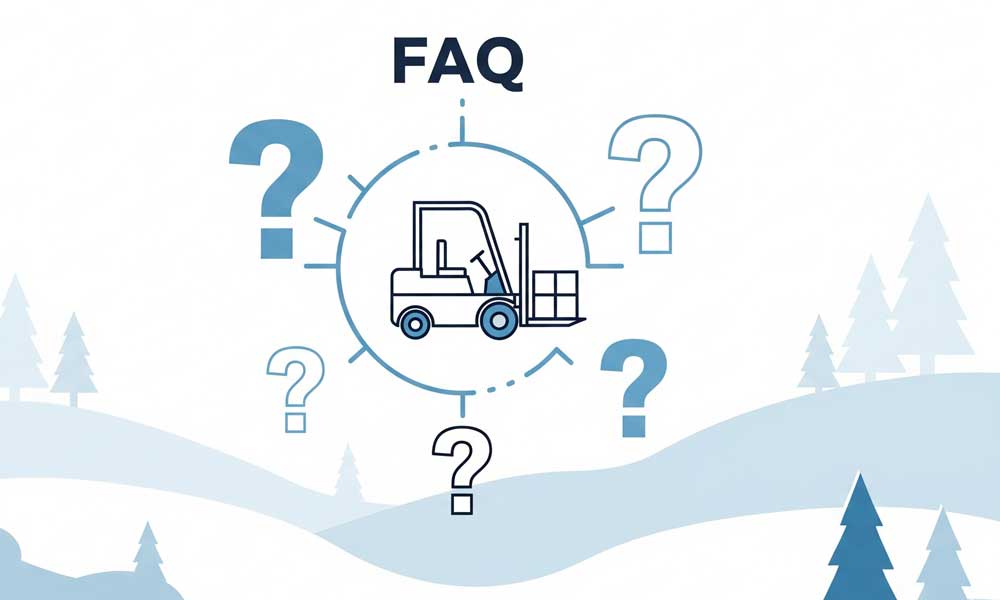
FAQ
Which is better: electric or propane forklifts?
Indoors → electric. Heavy outdoor multi‑shift with limited power → propane. Mixed fleets often win.
Do electrics work in Canadian winters?
Yes—use Low‑Temp lithium packs, low‑viscosity oils, and warm‑area charging.
How do the energy costs compare?
In most provinces, hourly electricity cost is significantly lower than propane; carbon pricing widens the gap.
Best for cold storage?
Low‑Temp lithium electric. Lead‑acid derates heavily; indoor propane is discouraged.
Which has lower maintenance?
Electric has fewer consumables; propane requires periodic engine service and emissions tuning.
What about elevation?
Electric does not derate; propane loses ≈3–4% per 300 m.
Can electric work outdoors in the rain?
Yes—with IP54/55 designs and sealed connectors.
Conclusion & Next Step
For most indoor Canadian operations, electric—especially lithium—wins on TCO and air quality. For harsh outdoor multi‑shift with power limits, propane remains highly practical. Share your site data (capacity, shifts, energy prices, temps, indoor/outdoor) for a tailored TCO and fleet mix.
